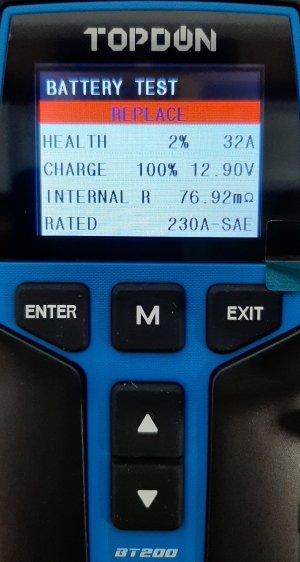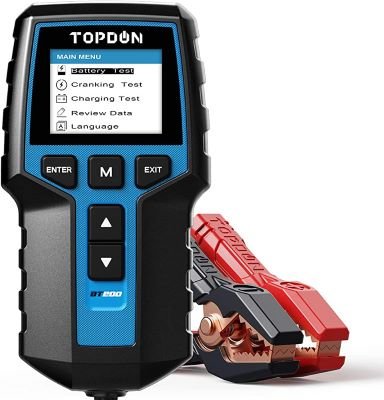Now having worked in a battery lab, I never gave much credit to fast ‘n easy conductance testers that we tested. Why? Because when I did a REAL capacity test and a REAL load test, the conductance testers were close at best.
I bought the TOPDON BT200. It was on sale at Amazon and only $5 more then the BT100, the same tester, but only does 12V instead of 12V/24V, not that I can see much use for the 24V system.
And the readings from my original and failed R1200 GS Adventure battery that I fully charged…
I have no idea how they calculate Health at 2% and 32A when you have a 230A SAE rating.
As you can see the « state of charge » of the battery is at 100% and 12.90V which really is meaningless without further info. It is the open circuit voltage with no load (starter, headlights, ignition-on) applied when using a Digital Multi Meter on the battery.
The Internal R (reisitance) tells it all and that is basically what you are doing with a REAL load tester, where you’d be looking at the voltage drop to a minimum over a 15 second period while cranking the starter (the highest load in any vehicle, especially on a very cold morning). And 76.92 m Ohm is a very done battery when it comes to internal resistance.
So how did I know my battery was done before buying my tester?
1) seeing that the battery voltage dropped from about 12.6V to 8V, then 7V when I just tried to start it and then just with the ignition on. No capacity!
2) charging the battery and noted that it went from a relatively dead battery to 14.4V in a few minutes using a 1A battery charger.

